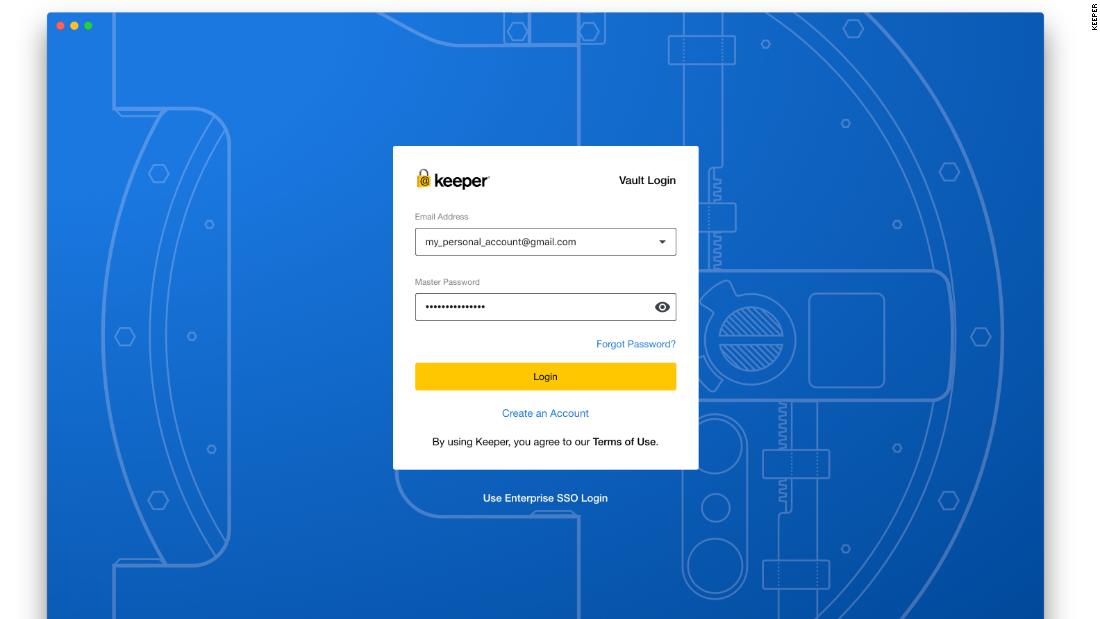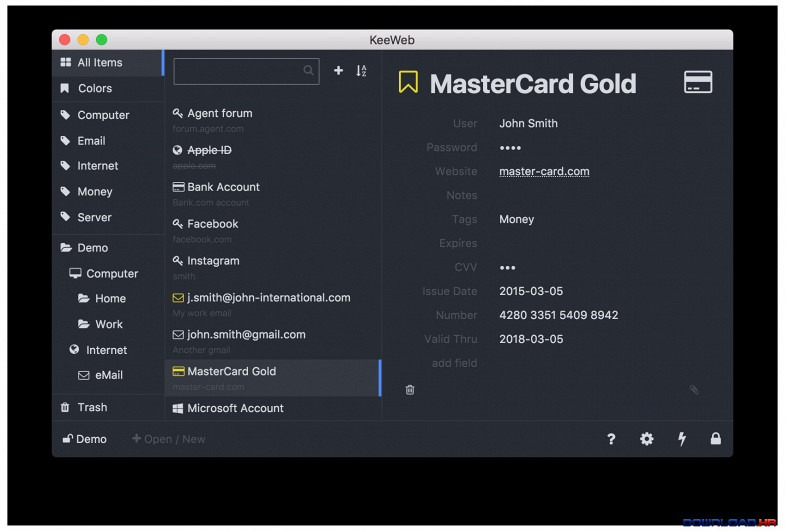
- KEEWEB SECURITY FULL VERSION
- KEEWEB SECURITY INSTALL
- KEEWEB SECURITY PASSWORD
- KEEWEB SECURITY OFFLINE
- KEEWEB SECURITY FREE
KEEWEB SECURITY PASSWORD
I hope this has been helpful and enjoy using KeeWeb password manager on Linux Mint 21.
KEEWEB SECURITY INSTALL
Some of the supported KeeWeb shorts cuts are as shown: KeeWeb install PluginsĬlick on Plugins→load plugin gallery. It supports shortcuts and keyboard completion, plugins and interaction with usb.Ĭlick on ‘ General’ to check on updates, functions, language and several other settings as shown. KeeWeb comes with a lot of options to customize it as you like.
KEEWEB SECURITY FREE
The goal of the project is to have a free password manager with polished design that works right in your browser without the need to install anything. This means that you will also be able to sync data from KeeWeb application to a cloud storage. KeeWeb is a free, open-source password manager compatible with KeePass. Click on ‘ Save to’ and choose an option. The only official app is and desktop apps downloaded from or GitHub releases.
KEEWEB SECURITY FULL VERSION
If you're asked to pay for full version or ad removal, most probably it's a scam. You can also choose to save your KeeWeb file to a cloud storage. A: KeeWeb will always remain free and ad-free, at least for personal use. To create a group or add entries, select your newly added file and click the + sign and choose to add a group, entry or template. You can group your entries or add individually.

Compose your question and send it to the support specialists and they will definitely answer you. Many users may have questions or problems. In this case I have added one called lornaKeeWebdb. KeeWeb is an open-source, cross-platform password manager with cloud sync functionality, keyboard shortcuts, and various plugin support to diversify your use. Once added, your new file should appear on the left side of KeeWeb application as shown. KeeWeb Reviews The Best Password Managers To Keep Your Data Safe In 2022 As a result, there are also plenty of fully compatible, highly polished KeePass-compatible alternatives worth considering, particularly if you use macOS or Linux. This opens a page where you will set the name, default user and the master password and several other settings for your database as shown below. To create a new KeeWeb database, click on ‘ New’ at the bottom left corner of the KeeWeb app. You should be able to see its icon added as shown below:Ĭlick on the KeeWeb icon to open it. Once installed, search for KeeWeb from your Linux Mint applications. KeeWeb free and open source, cross-platform password manager compatible with KeePass Content hide 1. You can check for the latest releases on the releases page. deb file by running the below shown below. Install KeeWeb on Linux Mint 21 / Linux Mint 20 You should see a page as below where you can simply add the records you need. If you prefer to use KeeWeb online, simply use the url. In this guide, we are going to look at the installation of KeeWeb password manager on Linux Mint 21. Similar Cos.1Password, Dashlane, LastPass, Bitwarden, Keeper Security & 425 others.
KEEWEB SECURITY OFFLINE
Keeweb can be used in two different ways: Use KeeWeb online and avoid installing the desktop application or use it offline having downloaded KeeWeb application to your desktop. It is compatible with KeePass password manager. It comes with features such as cloud sync, plugin support and keyboard shortcuts. In Windows I’ll probably use the original KeePass.KeeWeb is an open source cross-platform network manager. On my Linux machines I think I might switch from X to XC, but I’ll test XC a few weeks first and look for bugs before the switch. But on Linux the GUI isn’t appealing, has bugs and requires mono so X and XC are better there in my opinion. The original KeePass for Windows/.Net has more functionality and is probably more secure in Windows than both KeePassX and KeePassXC and works great on Win7, 8.x and 10.Net lowers the risk for security related bugs created by programmers compared to C++. I don’t know, but it should’ve been put in an optional plugin not in the main program. Only disadvantage I could find was that it has a function to talk with web browsers through plugins which I don’t think I will use and therefore offers no advantage to me but might possibly be a security threat if accidentally left on in settings. I can’t say anything about security or how many hidden bugs it has, but the GUI is much better than KeePassX which has had unfixed GUI-bugs for a few years.

Target users for this tool are general public. OS X and Windows users might prefer KeePassXC over KeePassX as autotype works there: KeeWeb is commonly used for password management. I tested KeePassXC for the first time today on Linux.


 0 kommentar(er)
0 kommentar(er)
